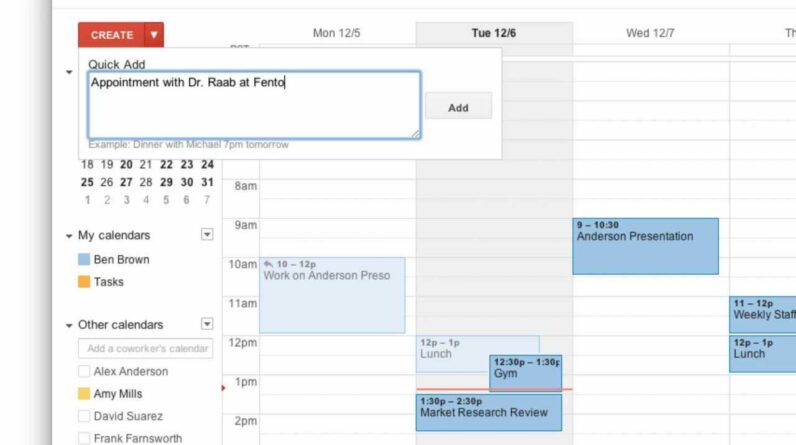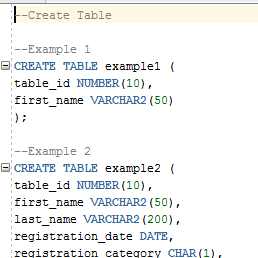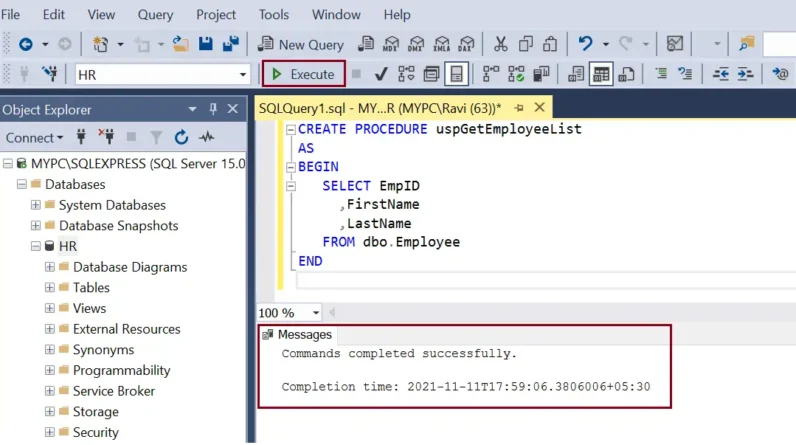
In this article, you will learn the secrets to creating effective step-by-step tutorials. Whether you’re an aspiring teacher, a content creator, or just someone who enjoys sharing knowledge, this guide will provide you with valuable tips and tricks. By the end of this article, you will have the skills to create engaging tutorials that are easy to follow and understand.
To start, we will explore the importance of breaking down a complex task into simple and manageable steps. By doing so, you will make it easier for your audience to follow along and avoid confusion. Additionally, we will discuss the importance of clear communication and using visuals to enhance the learning experience. With these techniques, you will be able to create step-by-step tutorials that are both informative and enjoyable to watch or read. So let’s dive in and discover the secrets to creating effective how-to tutorials!
Table of Contents
How to Create Step-by-Step Tutorials
What are Step-by-Step Tutorials
Step-by-step tutorials are instructional guides that break down complex tasks into easy-to-follow steps. They provide a detailed roadmap for completing a specific task, enabling individuals to learn new skills or solve problems effectively. By following a step-by-step tutorial, readers can gain practical knowledge and confidence in a particular subject.
Definition of Step-by-Step Tutorials
Step-by-step tutorials are instructional materials designed to guide individuals through a specific task or process. They outline a series of steps in a sequential order, providing clear instructions to help users achieve their desired outcome. Whether it’s learning a new software, assembling a piece of furniture, or acquiring a new cooking technique, step-by-step tutorials simplify complex tasks by breaking them down into manageable steps.
Importance of Step-by-Step Tutorials
Step-by-step tutorials play a crucial role in enhancing learning experiences. They provide structure, clarity, and guidance, making it easier for individuals to acquire new skills and knowledge. Here are a few key reasons why step-by-step tutorials are important:
-
Ease of Understanding: Step-by-step tutorials present information in a logical and organized manner. By breaking down complex tasks into smaller steps, they help learners grasp and understand each stage of the process.
-
Clear Instructions: Well-crafted step-by-step tutorials provide clear and concise instructions that are easy to follow. They eliminate ambiguity and ensure that learners can navigate through each step without confusion.
-
Increased Retention: Learning through step-by-step tutorials enhances retention as learners engage actively with the material. By actively participating in each step, individuals are more likely to remember and apply the information effectively.
-
Self-Paced Learning: Step-by-step tutorials allow individuals to learn at their own pace. They can pause, rewind, or fast-forward through the instructions, enabling a personalized learning experience.
-
Problem Solving: Step-by-step tutorials are valuable tools for troubleshooting and problem-solving. They provide a structured approach to overcome challenges and accomplish specific tasks.
Identifying the Topic for Your Tutorial
Before creating a step-by-step tutorial, it is essential to identify a suitable topic and understand who the target audience will be. Consider the following factors when choosing a tutorial topic:
Choosing a Suitable Tutorial Topic
Select a topic that you are knowledgeable and passionate about. It could be a skill you have mastered, a challenge you have overcome, or a process you are experienced in. By choosing a subject you are familiar with, you can create a more authoritative and informative tutorial.
Identifying the Target Audience
Determine who will benefit from your tutorial. Consider their prior knowledge, experience level, and learning preferences. Understanding your target audience will help you tailor your tutorial to their specific needs and ensure that the instructions are easily comprehensible.

Planning Your Tutorial
To create an effective step-by-step tutorial, you need to plan and structure your content. Here are some essential steps to consider during the planning phase:
Creating an Outline of Steps
Outline the sequential steps required to complete the task or achieve the desired outcome. Break down the process into smaller, manageable steps, ensuring that they follow a logical order.
Organizing the Content
Organize your tutorial content in a coherent and easy-to-follow manner. Use headings, subheadings, and paragraphs to structure the information. Consider using bullet points or numbering to highlight the steps clearly.
Determining the Level of Detail
Strike a balance between providing enough detail for users to understand each step and avoiding overwhelming them with unnecessary information. Consider the target audience’s knowledge level and adapt the level of detail accordingly.
Creating Clear and Concise Instructions
To ensure your tutorial is effective, it is crucial to provide clear and concise instructions. Follow these guidelines to create instructions that are easy to understand:
Breaking Down Complex Tasks
When explaining a complex task, break it down into smaller, digestible steps. Each step should build on the previous one, guiding users through the process without overwhelming them.
Using Clear and Precise Language
Use simple and concise language in your instructions. Avoid jargon, technical terms, or acronyms that may confuse your readers. Explain any necessary technical vocabulary or concepts with clarity.
Avoiding Jargon or Technical Terms
Make your tutorial accessible to a broader audience by avoiding jargon or technical terms, unless they are essential for understanding the topic. If technical terms are necessary, provide explanations or link to additional resources for further clarification.

Using Visual Aids Effectively
Visual aids are powerful tools to enhance understanding and engagement. Here’s how to use them effectively in your step-by-step tutorial:
Choosing the Right Visuals
Select visuals that support the instructions and make the process more accessible. Use screenshots, diagrams, or illustrations to reinforce the written instructions and provide visual cues.
Providing Clear Annotations
Add annotations to your visuals to highlight important areas or steps. These annotations can include arrows, callouts, or labels that guide users’ attention to specific elements on the screen.
Using Visuals to Enhance Understanding
Visual aids should complement the written instructions, not replace them. Use visuals to provide additional context, illustrate complex concepts, or show the end result. The combination of visuals and text ensures a comprehensive learning experience.
Including Supplementary Materials
To enrich your tutorial and support the learning process, consider adding supplementary materials. Here are some examples:
Adding Relevant Images or Videos
Include images or videos that demonstrate specific steps or techniques. Visual demonstrations can provide additional clarity and help users better understand each step.
Providing Downloadable Resources
If applicable, offer downloadable resources such as templates, worksheets, or cheat sheets. These materials can serve as references or tools that users can use to practice the skills taught in the tutorial.

Testing and Reviewing Your Tutorial
Before finalizing your tutorial, it is essential to test and review the content. Here’s how to ensure its effectiveness:
Step-by-Step Walkthrough
Go through your tutorial step-by-step, following each instruction yourself. Ensure that each step is accurately described and that users can successfully achieve the desired outcome when following the instructions.
Seeking Feedback
Share your tutorial with others, preferably individuals from your target audience. Ask for their feedback, suggestions, and any areas that need improvement. Feedback from others can help identify potential issues and improve the overall quality of your tutorial.
Making Necessary Revisions
Based on the feedback received, make the necessary revisions to your tutorial. Address any confusion, clarify instructions, or add more details as needed. Revisions ensure that your tutorial provides a seamless learning experience.
Formatting and Presentation
The visual appeal and readability of your tutorial are crucial for user engagement. Consider the following formatting and presentation tips:
Choosing a Readable Font
Use a font that is easy to read, even at smaller font sizes. Stick to standard fonts such as Arial, Helvetica, or Times New Roman. Avoid fancy or overly decorative fonts that may distract readers or hinder readability.
Including Headings and Subheadings
Use headings and subheadings to structure your tutorial content. This helps readers navigate through the tutorial easily and locate specific sections and steps.
Using Appropriate Numbering or Bullets
Numbering or bullet points can make your tutorial more scannable and accessible. Use them to break down steps or list important information.

Finalizing and Publishing Your Tutorial
After reviewing and making necessary revisions, it’s time to finalize and publish your tutorial. Here’s what you should consider:
Proofreading the Content
Carefully proofread your tutorial for spelling, grammar, and formatting errors. Ensure that all instructions are clear, concise, and accurate. A professionally presented tutorial enhances credibility and improves the overall user experience.
Formatting for Online Platforms
Format your tutorial to suit the platform or medium you intend to publish on. Depending on the platform, you may need to adjust the layout, image sizes, or file formats to ensure optimal viewing and accessibility.
Promoting Your Tutorial
Once your tutorial is published, take steps to promote it and reach your target audience. Share it on social media platforms, relevant forums, or communities, and encourage feedback and engagement from users.
Conclusion
Step-by-step tutorials are powerful tools that enable individuals to acquire new skills, overcome challenges, and enhance their problem-solving abilities. By following the guidelines outlined in this article, you can create tutorials that are informative, user-friendly, and impactful. Start sharing your knowledge with the world and inspire others to create their tutorials, too!








